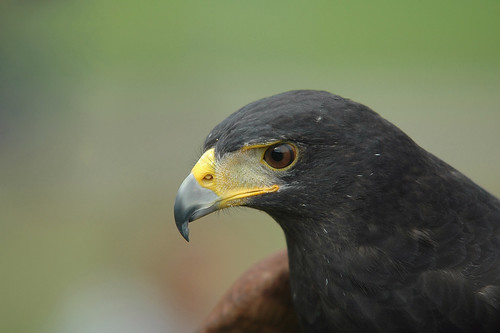
Impressions:
A few weeks after buying my first DSLR, I have been looking for
a high-quality medium range zoom. I had experience with the Nikkor 70-300G (a
cheap kit lens I used on my SLR) and had been disappointed by the picture
quality (lack of picture sharpness) and the small aperture of the lens (f5.6 for
the longer focal lengths). After reading some papers I came to the conclusion
that my needed range was "something-200mm" in a fast f2.8 version (max
aperture all over the range) BUT I didn't want to spend too much money on that
one. Impossible combination of requirements. The only Nikkor available in that
range was the 70-200VR (vibration reduction technology) and that lens is costing
twice as much as the Sigma.
So I decided to go for the Sigma after having read a number of positive reviews.
That lens is one of the best in the category. Optical quality is excellent.
Distortion, CA, and vignetting are not really an issue on that kind of lens and
sharpness is very good wide open, and excellent closed down. But two limitations
made me change my mind: I became interested in wildlife, and for that kind of
application, the longer
the lens the better. So I bought a TC (Sigma 2xTC) to get more reach (equivalent
of 400mm f5.6). This has been working but I missed the shorter end, ending up
switching all the time (with and without TC). As you know, switching lenses
constantly is not highly recommended on a DSLR because of dust issues and simply
because it takes time. I also had the opportunity to test VR lenses and I made
my decision: I needed the 80-400VR or OS for my kind of shooting. After buying
the 80-400OS, I didn't use the 70-200 a lot anymore, mainly for portrait or when I
wanted a slightly higher quality (the 70-200 gives slightly sharper pics in the
80-200 range and has the speed...). But anyway, while travelling, I could live
without the 70-200... I decided to sell it and I got a very reasonable price so
that my loss has been very limited. Now, after a while, not having it, made me
frustrated because I could use the speed (f2.8) and the sharp pictures... so I
made my decision to buy a 70-200VR in a near future, for the range/speed, the
superb quality of the Nikkor version and in fact mainly because of the VR, a
function I became addicted to. In the meantime, I got a Tokina 80-200 2.8, an
excellent lens in the category but old fashioned (slow AF, turning front
element, but sharp wide open, built as a tank, nice tripod mount, and SUPER
cheap used). This covers my immediate needs for portrait mainly.
Back to the Sigma - there are several versions of this lens. I had the non-DG
version (the first one). After that, Sigma made a DG-version. The difference is
that they added a special coating to avoid reflections between the rear element
and the sensor of the camera, to improve picture quality. According to several
magazines, they also optimized the whole lens, making it a better performer than
the first one. Very recently, they just introduced a third version, the macro
version. The difference here is just that they reduced the minimum focus
distance, allowing to use the lens for close-ups (butterflies, flowers), Don't
think of it as a real macro capability. Based on what I read (I couldn't test
the last version), I would say all three are excellent performers, but go for
the last one if you want the full flexibility.
Pros
- solid build
- constant 2.8 lens
- lens hood standard (petal type) - clicking mechanism - reverse mounting for
transport
- very nice carrying bag
- excellent tripod mount
- fast and quiet AF (HSM - the Sigma version of AF-S)
- IF (internal focus)
- no moving external elements
- sharp even fully open (f2.8)
- reasonable MFD (minimal focus distance)
- relatively cheap
- works well with Sigma TC's (picture degradation very limited even with the
2xTC)
- no significant vignetting, color aberration or distortion visible
Cons
- heavy (user dependent)
- Sigma sometimes has quality control issues
- no stabilization (VR or OS)
- lens cap is not pinch type
- it is not a Nikkor (?)
One example (more to follow)
Eagle - 200mm f3.5 on a D70